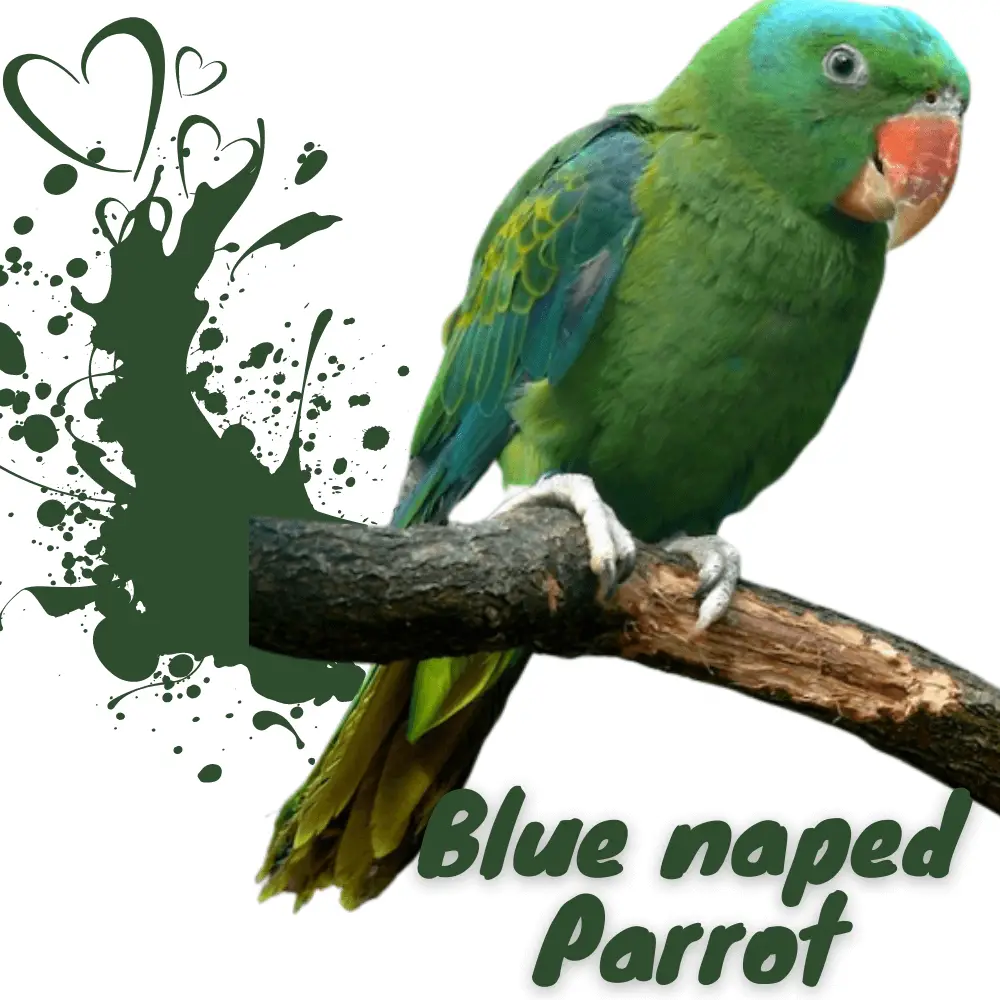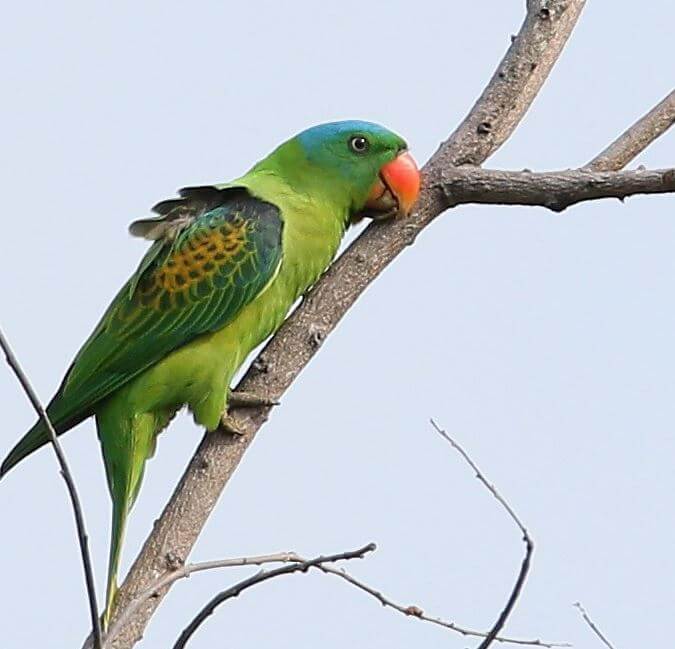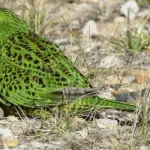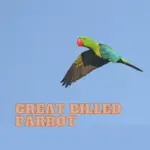
Blue naped Parrot 31 cm; 148–231 g. Green, brighter on head and rump; bill red; mid-crown to nape pale blue; back suffused blue; bend of wing black, lesser wing-coverts black with broad orange-buff edging; other wing feathers blue and green; tail dusky yellow below.
Immature duller, with a little blue on head. Race hybridus has reduced blue on the head and back, less black in a wing; Salvadori has all-green back; talautensis has all-green back but blue of head extending onto cheeks.
Editor’s Note: This article requires further editing work to merge existing content into the appropriate Subspecies sections. Please bear with us while this update takes place.
Possibly forms a Blue naped Parrot pair with T. megalorynchos. Additional proposed races paraguenus, koikei, moro, nigrorum and siquijorensis are included within Salvadori. Five subspecies were recognized.
Subspecies
Feral population (presumably race salvadorii) around Kota Kinabalu, W Sabah, in N Borneo.
Tanygnathus lucionensis lucionensis Scientific name definitions
T. l. lucionensis
Distribution
Tanygnathus lucionensis hybridus Scientific name definitions
Distribution
Tanygnathus lucionensis salvadorii Scientific name definitions
Distribution
Tanygnathus lucionensis talautensis Scientific name definitions
T. l. talautensis
Distribution
Distribution
Editor’s Note: Additional distribution information for this taxon can be found in the ‘Subspecies’ article above. In the future, we will develop a range-wide distribution article.

Habitat
Lowland forest up to 1000 m, secondary forest, and scattered trees within agricultural lands close to the forest; also mangroves, coconut groves, and banana patches.
Although present on large islands, this bird appears to be a small island specialist adapted to survival in relatively confined wooded areas.
Movement
No information. Populations confined to small islands must be highly sedentary, but regular dispersal from such sites also seems likely.
Blue naped Parrot Diet
Blue naped Parrot eat Fruits and seeds of forest trees, palm fruit, young coconuts, bananas, and papaya.
Sounds and Vocal Behavior
Flight Blue naped Parrot call a grating “krreh…krreh…krreh…”. When perched, vocabulary includes several nasal screeches and squawks combined with more piercing or squeaky screeches.
SOURCE: Bob Dayon
Breeding
Apr-Jun. Blue naped Parrot Nest in a natural cavity or in the deserted hole of a large woodpecker, often in a clearing. No information on clutch size, but the size of eggs laid in captivity is 36–40·9 mm × 25–28·4 mm
Blue naped parrot care
SOURCE: Otter Mom
Conservation Status
Not globally threatened. Currently considered Near Threatened, and previously, Endangered. CITES II.
Possibly now extinct on Negros and Siquijor, and very rare on Mindoro, Luzon, and other islands, owing to a combination of habitat loss and high levels of illegal trade for both domestic and international markets; it is clearly uncommon on Sibuyan.
However, the number of small islands on which it survives is not known and may in fact be very considerable. It was very common on larger islands in the Sulu Archipelago in 1971.
Blue naped Parrot survives on Palawan albeit under great trapping pressure, and remains common in Talaud Is, although judged uncommon on Salebabu in 1985, but regular there and on Karakelong in 1995.
Blue naped Parrot occurs in some national parks in the Philippines, e.g. Bataan National Park, Quezon National Park, and Minalungaw National Park, Luzon, and is fairly common in St Paul’s Subterranean National Park, Palawan.





















